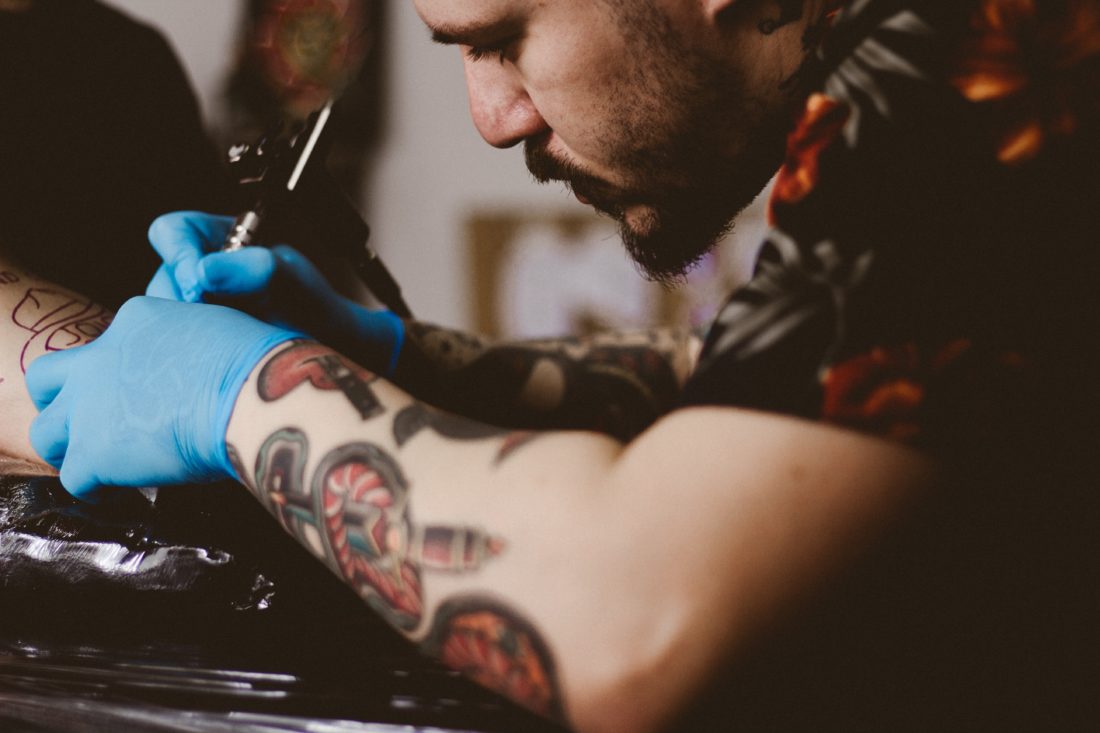
How to Get Rid of That Drunken Holiday Tattoo
There’s nothing like travelling with friends. It’s the end of the summer, after graduation (whichever one), and you don’t have a care in the world. or better yet, it’s the dead of winter but you’ve all made it to some warm, tropical confine of our planet. Everyone is having an amazing time, but as the end of the trip draws near, spirits dampen because there’s nothing you can do to hold on to this fleeting feeling of absolute bliss. Or is there? Someone mentions tattoos. A joke turns into a dare, and, with the help of alcohol, the whole group wakes up on the last day to discover giant letters creeping around your ankles: IBIZA 2017 will haunt you for the rest of your lives.
Fear not. If you have an ex-lover’s name tattooed on your bicep, or a tribal sun on your back, it doesn’t have to be permanent. I asked our founder and chief medical officer Dr. Rome a few questions about BSG’s tattoo removal methods, and it turns out the technology has improved at a breakneck pace – it could take as few as four laser removal sessions to get rid of an unwanted tattoo nowadays.
HOW DOES IT WORK?
First, let’s start by channeling our common sense and giving you this sensible warning: don’t try this at home. A few seconds’ worth of Googling will yield dozens of websites touting DIY solutions for tattoo removals. These do not work, and some of the methods advertised can be outright dangerous. Luckily, the wonders of modern science have provided us with laser removal (which means you won’t have to try rubbing salt on your tattoo frantically, and ending up with a tattoo and a rash). According to Dr. Rome, there used to be surgical procedures, but nobody does those anymore. It’s all about lasers.
So, how does it work? Think of the tattoo not as a full-blown picture, but as a collection of tiny ink particles that, all together, make up a picture. As soon as you get tattooed, white blood cells (WBCs) in your body recognize the heavy metals in the tattoo paint as foreign bodies. So, they do what WBCs do best and try to eat up the paint particles, so they can filter them through your blood and eventually excrete it. There’s a problem, however. The WBCs can get to work on the smaller of the ink particles, but most of the ink is made up of large particles that are too big to be engulfed by the WBCs. That’s where the laser comes in.
“Short laser pulses create a shockwave that breaks the ink into much smaller particles,” says Dr. Rome. Once the ink has been broken down, the WBCs can do their jobs and get rid of the small paint particles. It’s really your own body that does the hard part; we just help it along with the lasers.
HOW MUCH DOES IT COST AND HOW LONG DOES IT TAKE?
This is going to depend on the size of the tattoo, and the exact number of treatments required to get rid of it. Thanks to new lasers like the one at BSG, we can deliver picosecond (that’s one trillionth of a second) pulses, where older lasers used to only be capable of nanosecond (one billionth of a second) pulses. Shorter pulses are much more effective at breaking up the ink, and as a result, if you get your tattoo removed with a picosecond laser, it will take far fewer sessions. It can take more or less time depending on tattoo size, but it usually takes around four to six treatments. The treatments themselves are spaced out by two to three months. As for cost, that also depends on size, although you can safely bet on at least several hundred dollars, if not a thousand dollars.
DOES IT HURT?
“People are always concerned about pain,” Dr. Rome tells us. “Tattoo removal can be quite painful, much worse than getting a tattoo. Most places just apply ice packs and topical numbing cream. At BSG we perform numbing injections to anesthetize the area and make the treatment much more comfortable. “
So, what are you worried about? Come on down to BSG to get that embarrassing tattoo taken care of by professionals. Book your consultation session here. When that’s all done and dusted, you can focus on your other 2018 resolutions, and use our advice to get in shape.
